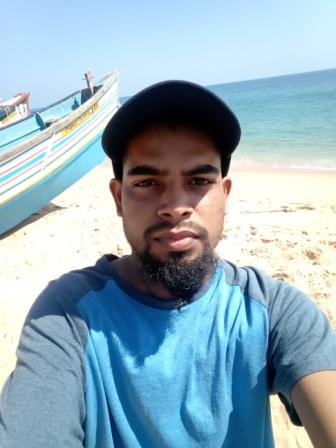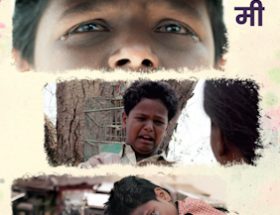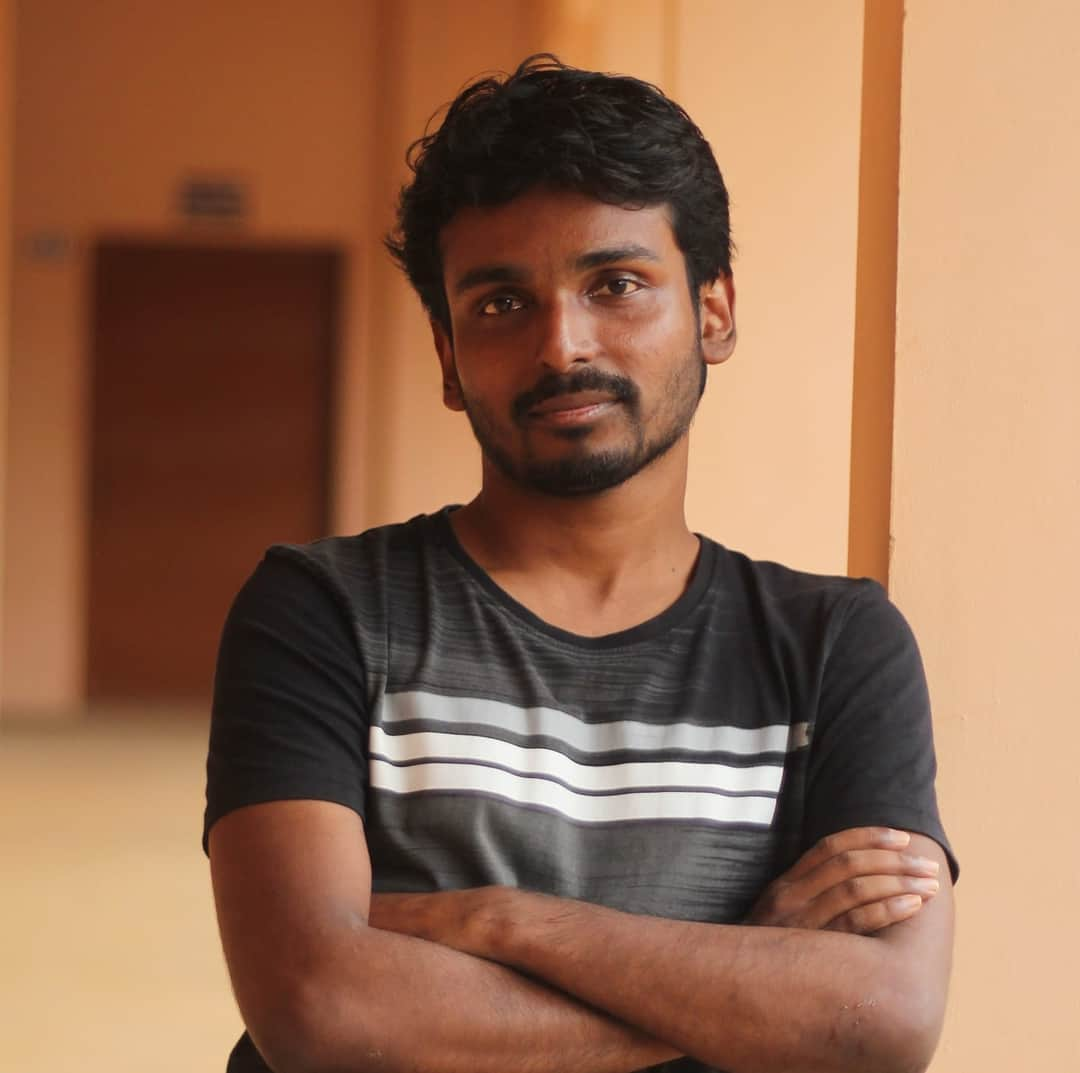Ibin Nayakm
Ravish Kumar (Brahmin) has resigned from NDTV (New Delhi Television): that’s big news in India now. The takeover of NDTV by Adani, the country’s largest monopolist and the world’s second richest man, is believed to have led to the resignation of Ravish Kumar. Self-proclaimed liberals are picking on this action of the journalist and celebrating it.

Meanwhile, I am here at my home, thinking about how to repay my sister’s wedding loan and how to find a job that will support my family’s dwindling finances. I had resigned from my recent corporate job when I felt the work became too exploitative. Now I don’t have a job, so I have time to think and write about these things.

I don’t know how qualified Ravish Kumar is academically. I have a master’s degree in mass communication—enough qualification for the job that Ravish Kumar and his associates are currently doing. But there is a problem—I don’t know Hindi very well.
Before coming to Ravish Kumar and my realization of what happens inside Indian news studios, I have to tell you why I insert myself (as a indigenous student) into this issue.
The Indigenous Vs. Pandemic
My academic journey starts here from the coastal region of Thiruvananthapuram, Kerala. I’m the care of innocent parents who are illiterate but have values in life. I come from a society where the number of people who go on to do graduation in any subject is low. The number of girls reaching graduation is comparatively higher than that of boys. But traditionally, girls who graduate get married after college instead of looking for decent salaried employment.

In the post-covid pandemic time, this graduates’ number has again come down significantly. Even the students who had to revert to fishing, the main occupation of the region, could not return to it when the schools reopened, after the long gap. No one notices this trend. Fishing is an occupation that we take great pride and comfort in, and which gives us a lot of pleasure. But it is dangerous that the children are not returning to the academic education necessary for the growth of the indigenous community.
At least some of the students reached higher studies with the support of the quota for those who participate in football and other sports. However, the pandemic ruined their fitness by not letting them to exercise and closed their chances to appear at trials. They returned and ended up fishing for food and financial requirements.
Overburdened by the Vizhinjam Adani Port Project
Not only in Ravish Kumar’s life but also in our lives, Adani came as a birth/land stealing corporate. The construction of the Vizhinjam port by the Adani group made half the coastal region near my village useless and lifeless. Anyway, I don’t want to explain what the project and its all physically destructive impacts are; nonetheless, it’s important to observe how the problems caused by the project divert the people from the direct problems this indigenous ethnic community already faces.

As a downtrodden group of more than two crore population all over India, 10 and half lakh all over Kerala (according to Union Government Ministry of Fisheries, Animal Husbandry and Dairying annual report 2020), the fishing community faces countless fundamental problems:
· Poor higher education support,
· Health issues; early cardiac issues are increasing among fisher folks,
· No efficient ocean ambulance and medical teams who have enough training and capabilities to come inside the ocean when a medical emergency happens.
· No fish selling women’s safety and projects for their entrepreneurship to grow, for efficient and hygienic transportation and marketplaces to sell fish, with toilet facilities for women,
· Financial equipping programs for fisher folks since they are daily earning people and more than four months annually they can’t go fishing due to big tides, cyclone warnings, rough climate, trolling season, etc.
· Programs to increase their social capital,
· Programs empower them politically,

Unemployment
Unemployment is a very big issue now all over India.
According to the Periodic Labor Force Survey 2021, which included 22 states and measured unemployment rates for young people aged 15 to 29, the rate of youth unemployment in the April to June quarter of 2021 was 25.5%. The overall unemployment rate in India increased from 9.3% to 12.6% in the June quarter of 2021–2022 as well.

Given that 50% of the population is under the age of 25, India is a powerhouse in terms of the available labour force, making the employability crisis facing graduates here a perplexing issue. As per the World Economic Forum, just one in four management professionals, one in five engineers, and one in ten graduates who enter the workforce each year in India are employable.
The main reason found by this survey for unemployment was unskilled students. The students are not learning anything suitable for currently available work in India (jobs provided by corporates). And we only have limited job vacancies in the government sector for such a large number of youth in this country.
Question is, what does the government want most of the youth in this country to do? What has this government done for them so far?
In India, the elites or dominant caste people can easily take sanctuary in their ancestral wealth (expropriated from oppressed communities) and social capital. Meanwhile, downtrodden people go back to very petty jobs for their survival.
As an indigenous community, fisher folks depend on the ocean. Fishing is a good job to earn enough money and food for daily needs. Fishing community youth are very courageous as they have a job in hand. When the Vizhinjam Adani port project came–that stole their courage. Most of the graduates from the community (a limited number) are trying to find safe zones in foreign countries even if it is on illegal visas. Lot of people are defrauded in the name of foreign visas in fishing villages, and have lost lakhs which they had borrowed from banks and money lenders. Young people from coastal areas have received job offers in foreign nations for physical labour: as shopkeepers, water can boys, construction workers, security guards, caretakers of the elderly etc. Young people in the fishing villages are offered employment that is physically demanding and hazardous as well. None of these jobs promote respect or pride in our society.
Why don’t people demand or expect more mental labor from the fishing community as we eat fish daily which makes our brains more active, scientifically?
Fatty fish is a rich source of omega-3 fatty acids, a major building block of the brain. Omega-3s play a role in sharpening memory and improving mood, as well as protecting your brain against cognitive decline according to renowned online health magazine, healthline.com. Tuna and sardine are omega-3s rich fishes, these are regular foods of Indian fishing communities.
It is quite sad that so few individuals in Kerala have managed to obtain government employment, and those who have are reluctant to disclose their relationship with the fishing industry out of fear of being treated disrespectfully at their places of employment. The ethnic group of fishermen is among the most marginalized. It has many distinctive dialects, a culture distinct from the mainstream culture. Government exams and other admission exams are extremely difficult for coastal kids as a result of this situation.
Now we come to the Adani port project again, and see what they (the corporates and the government) don’t want us to do:
· Think about this issue and its solutions,
· Think about how to empower our own communities,
· Think about political theories,
· Think about academic hypotheses,
· Think about how to create jobs within our own environment,
· Think about what are our actual requirements from the government,
· Think about how to financially empower the community,
· Think about how to enhance the social capital of the community,
· Think about how to become human beings instead of slaves of the oppressors.
So overburdened by the Vizhinjam Adani port project, we have been not only completely diverted from our actual obstacles but also created more serious problems in the coast, change us as refugees from a struggling life.
Why did Ravish Kumar, and not any indigenous journalism student, become popular?

December 3 2022, ex Dainik Bhaskar journalist, Ved Prakash tweeted:
“There was never any vacancy of journalist in NDTV. Neither were the journalists hired through campus placement. Then how did journalists get jobs in NDTV?
Like this: we too belong to your caste.”
2nd August 2019, Oxfam India published a survey on representation of marginalized caste groups in Indian newsrooms. And they had come to the conclusion that while a small number of news outlets in India understand the importance of being inclusive and varied, the bulk continue to ignore their privileged structures. The way news is gathered or delivered is affected by the newsroom’s distorted caste equation. Without a voice from underrepresented castes, the news only represents the viewpoint of a privileged reporter, author, or TV panelist.

Public opinion and hiring patterns are still impacted by caste in the nation. However, it is impossible to draw conclusive statements on caste representation in the Indian media in the absence of data or a caste-based census.

The top seven English TV news channels are CNN-News 18, India Today, Mirror Now, NDTV 24×7, Rajya Sabha TV, Republic TV, and Times Now. There were no members of the Scheduled Castes, Scheduled Tribes, or Other Backward Classes in these channels as nearly 89% of leadership roles were held by journalists from dominant castes.
Ownership is the fundamental factor: overall, nearly 90% of the dominant caste people control all renowned media (including television, print and online media, etc.) working in India.

Meanwhile, more than 55% of the dominant caste anchors are making public opinions in India. In addition, more than 30% of anchors don’t reveal their caste and express soft support to dominant caste decisions.

Particularly here, you have to compare Ravish Kumar and indigenous and oppressed caste individuals like me, and students more deprived than me. How much privilege Ravish Kumar and similar journalists hold to think about social issues, make decisions and construct public opinions without harming their caste dominance even though the real problem is the dominance of the upper castes.

Even in one of his prime time shows, Ravish Kumar criticizes affirmative action programs like reservation by portraying it as one of the vote bank politics tools, on NDTV. And he tweeted; “Quota quota quota – Everyone wants it. Lots of confusion with one clear goal-vote.”

Meanwhile, Shekhar Gupta, Editor-in-Chief and Chairman, the Print, has made a detailed program regarding the Vizhinjam Adani port project on his popular online channel. He started the show by saying, “My basic domain knowledge of maritime issues is very limited.” Then he tries to portray fisher folks protests as church made protests and claimed that the Christians (most of the fisher folks subscribe to Christian beliefs) started communal violence with other religious groups during protests. In addition, he wants to add that people who protest against Adani port are not educated or they don’t have knowledge to think about the benefits of this port.
In my understanding as a mass communication graduate from this indigenous fishing community, Shekhar Gupta’s understanding about the protest was idiotic. He doesn’t have the knowledge to understand the indigenous rights, how the port impacted the community and what injustices Kerala government is doing to this deprived ethnic group without making a proper rehabilitation package for the homeless people after they had started the dredging the ocean for the port.
This is a really inappropriate way of doing mass communication—someone from an oppressor community, who hasn’t gone through any discrimination like the fishing community, writing from Delhi about an issue happening at one of the most southern districts, Thiruvananthapuram, and diverting the whole issue into his location’s familiar problem, that is communal riots.

Oxfam India’s survey of ‘panelist discussion on caste issues by Indian media’ states that more than 60% of the journalists are from the oppressor castes. In addition, the fun part is: Ravish Kumar’s former employer NDTV and News 18 are conducting these discussions with 100% of oppressor caste panelists!
The most popular theory in mass communication by Marshall McLuhan is that ‘the medium is the message’, which means only those who control the medium or are inside the medium can make its messages and, be the message themselves. It does not require any quality in the content (message), but should compulsorily have the presence of the object in it. Whoever is not in the medium automatically can’t be the message.

This is why oppressor group people like Ravish Kumar are popular all over India (his Hindi privilege is another kind of hegemony), but indigenous people like me are forcefully pushed to low income physical jobs even though we have post-graduation qualifications. They (the oppressor castes and capitalists) don’t want us to think about ourselves. Instead they want us to waste our caliber by always worrying about survival until the next day, by creating problems for us and perpetrating injustices on our lives.
~~~
Ibin Nayakm is a first generation graduate from a coastal fishing community in Kerala. He completed his Masters in Mass Communication from Central University of Jammu (2022) and worked at regional online newspapers and coastal community radio for two years (2019-2021).









